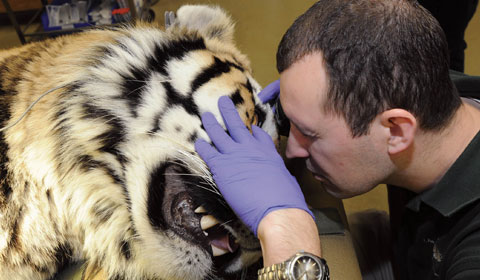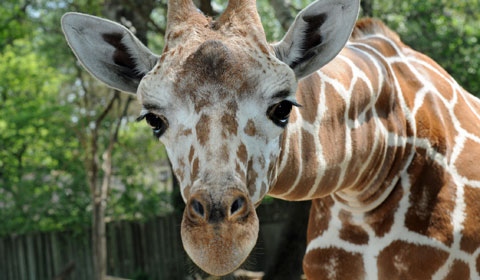News Release
FOR IMMEDIATE RELEASE
Contact: Sondra Katzen, Public Relations, (708) 688-8351, sondra.katzen@czs.org
September 7, 2018
Unique Salamander Species at Brookfield Zoo
Photos:
7256: Texas blind salamanders can be seen at Brookfield Zoo’s Living Coast habitat. (Jim Schulz)
1337, 1364, 1367: The Texas blind salamander is found only in the water-filled caves of the Edwards Aquifer in San Marcos Texas. Brookfield Zoo is one of three accredited zoos in North America to have them. (Kelly Tone)
Brookfield, Ill.—Unless taking the time to look, guests visiting Brookfield Zoo’s Living Coast exhibit may miss one of the most unique-looking and smallest animals at the zoo—the Texas blind salamander. They can be seen in an aquarium in the Rocky Shores habitat.
Eight salamanders arrived a few months ago from Audubon Zoo in Louisiana, making Brookfield Zoo one of only three accredited North American institutions to have this species. Found only in the water-filled caves of the Edwards Aquifer in San Marcos Texas, these salamanders are neotenic, meaning they never fully metamorphose, remaning in a juvenile-like aquatic stage even as adults.
The species is listed as vulnerable on the International Union for Conservation of Nature’s Red List, and it is classified as endangered by the United States Fish and Wildlife Service. The biggest threat to the species is water pollution and overuse of water. A program that focuses on habitat restoration and modifications to prevent low water flows was initiated in 2013 to minimize stress on animals that live in the ecosystem, including the Texas blind salamander.
Two tiny black spots found under the skin are its eyes, making the species totally blind, which is why the salamander is so adapted for life in a predominantly aquatic and underground environment. It is a top predator and is able to find its next meal by sensing movement in its prey when there is subtle changes in water’s pressure. The diet consists mainly of snail, shrimp, and other invertebrates. The species is a translucent white color with bright red gills that protrude from the throat area. They have a finned tail that makes up a large portion of their body length, which is between 3½ to 5½ inches.
# # #
About the Chicago Zoological Society
The mission of the Chicago Zoological Society is to inspire conservation leadership by engaging people and communities with wildlife and nature. The Chicago Zoological Society is a private nonprofit organization that operates Brookfield Zoo on land owned by the Forest Preserves of Cook County. The Society is known throughout the world for its international role in animal population management and wildlife conservation. Its Center for the Science of Animal Care and Welfare is at the forefront of animal care that strives to discover and implement innovative approaches to zoo animal management. Brookfield Zoo is the first zoo in the world to be awarded the Humane Certified™ certification mark for the care and welfare of its animals, meeting American Humane Association’s rigorous certification standards. Open every day of the year, the zoo is located at 8400 31stStreet in Brookfield, Illinois, between the Stevenson (I-55) and Eisenhower (I-290) expressways and is also accessible via the Tri-State Tollway (I-294), Metra commuter line, CTA and PACE bus service. For further information, visit CZS.org.
MEDIA CONTACT:
Sondra Katzen
Media Relations Manager
Office: 708-688-8351
Cell Phone: 708-903-2071
E-mail: Sondra.Katzen@CZS.org

Read about our innovative practices in animal welfare to ensure the ultimate care of our individual animals.

Create extraordinary connections with animals and nature!

Become our partner in caring for animals and in connecting people with wildlife and nature.